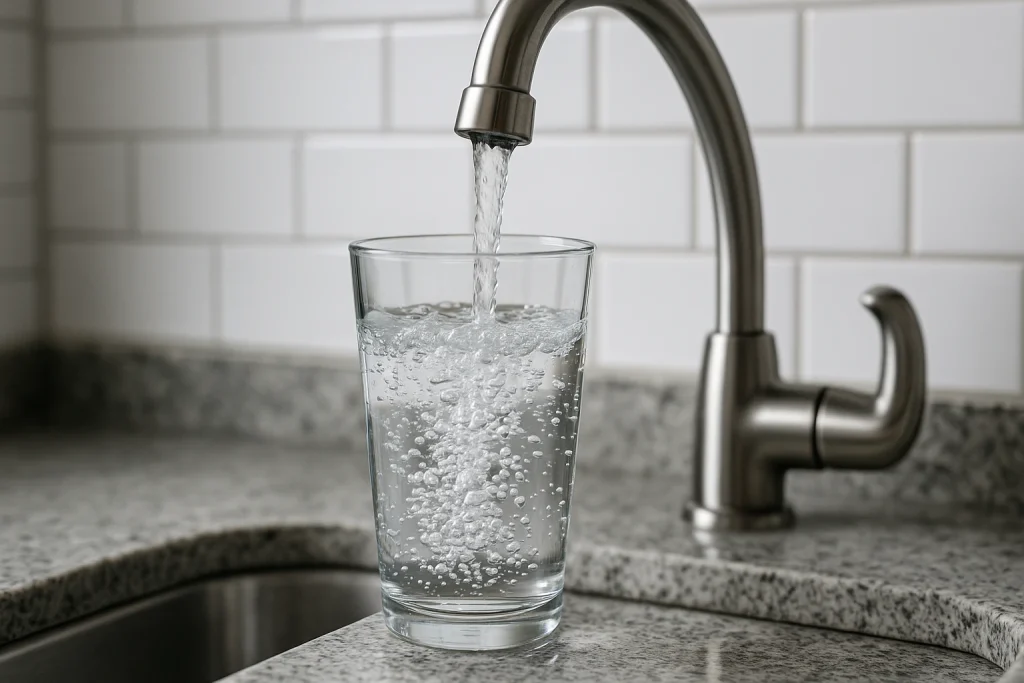
What’s in Your Water? Common Impurities and Filtration Options
If you’ve ever taken a sip of tap water and noticed a strange taste, odd smell, or slight cloudiness, you might have found yourself wondering, “Is this safe to drink?” You’re not alone. While most municipal water in developed countries is treated to meet safety standards, it can still carry a surprising number of impurities.
Whether you’re filling your glass from a city tap, private well, or rainwater tank, understanding what’s lurking in your water – and how it might affect your health – is an essential step toward making informed decisions about water filtration.
Why Is Water Quality So Important?
Water is more than just a thirst-quencher. It plays a vital role in digestion, circulation, temperature regulation, and even detoxification. Our bodies are made up of around 60% water, so it’s no surprise that the quality of the water we consume can have a significant impact on our health.
However, when water contains impurities like heavy metals, chemicals, or pathogens, it can do more harm than good. Some contaminants cause immediate symptoms such as stomach cramps or diarrhea. Others are more insidious, building up in the body over time and contributing to long-term health issues such as developmental delays in children, kidney damage, reproductive disorders, and certain cancers.
Common Impurities Found in Drinking Water
Let’s take a closer look at some of the most common contaminants and the health risks they pose.
1. Chlorine
Used widely as a disinfectant in municipal water systems, chlorine helps kill bacteria and viruses. But excessive chlorine in drinking water can irritate the skin, eyes, and lungs. It may also react with organic matter in the water to form disinfection byproducts like trihalomethanes (THMs), which have been linked to cancer and other health concerns.
2. Lead
Lead typically enters drinking water through corrosion of old pipes and plumbing systems. This is especially a concern in older homes and infrastructure. Lead exposure is dangerous at any level and can be especially harmful to young children, leading to developmental delays, behavioral issues, reduced IQ, and learning difficulties. In adults, it can increase the risk of hypertension, kidney damage, and reproductive issues.
3. Nitrates and Nitrites
Often found in agricultural areas, nitrates come from fertilizers, septic systems, and animal waste. In the human body, nitrates convert to nitrites, which can interfere with the blood’s ability to carry oxygen. This is particularly dangerous for infants and can lead to a condition known as “blue baby syndrome.” Long-term exposure has also been linked to thyroid dysfunction and increased cancer risk.
4. Microorganisms (Bacteria, Viruses, and Parasites)
Contaminated water can host harmful pathogens such as E. coli, Giardia, and Cryptosporidium. These microorganisms can cause severe gastrointestinal symptoms, including diarrhea, nausea, and vomiting. Some parasites are resistant to standard disinfection methods, and even treated municipal systems are occasionally vulnerable to breaches and contamination, especially during flooding or infrastructure failure.
5. Heavy Metals (Mercury, Arsenic, Cadmium)
These metals can leach into water supplies from industrial runoff, mining operations, and natural deposits. Arsenic, a well-known carcinogen, is linked to cancers of the bladder, lungs, and skin. Mercury and cadmium can damage kidneys, affect brain function, and harm developing fetuses when exposure is prolonged.
6. PFAS (Per- and Polyfluoroalkyl Substances)
Nicknamed “forever chemicals,” PFAS are used in products like non-stick cookware, waterproof fabrics, and firefighting foams. These synthetic compounds don’t break down easily in the environment and can accumulate in the human body over time. PFAS exposure has been linked to hormone disruption, immune system suppression, liver damage, and increased risks of certain cancers.
7. Fluoride
Fluoride is added to public water supplies in many countries to help reduce tooth decay. While small amounts are considered beneficial, excessive fluoride can lead to dental fluorosis (white spots or mottling on the teeth) or, in extreme cases, skeletal fluorosis, which affects bones and joints. Some people choose to reduce their fluoride intake, especially for young children, by using water filters that remove fluoride.
8. Sediment and Rust
Dirt, sand, rust, and other particulates can enter your water supply, particularly if you’re using a private well or live in an area with old plumbing. While these particles don’t usually pose a direct health risk, they can clog appliances, damage fixtures, and indicate deeper problems in your water system.
9. Pesticides and Herbicides
Agricultural chemicals like glyphosate can seep into groundwater and surface water. Chronic exposure to these chemicals is associated with hormonal imbalances, neurological damage, and certain cancers. Even trace amounts in drinking water are a concern for vulnerable populations like children and pregnant women.
10. Pharmaceuticals and Hormones
Traces of medications – including antibiotics, birth control hormones, and antidepressants – have been found in water supplies. While concentrations are typically low, the long-term impact of consuming such a cocktail of chemicals remains unknown and is an active area of scientific study.
How Water Filtration Helps
Fortunately, modern filtration technology can tackle many of these impurities effectively. Here’s a breakdown of common types of filtration systems and what they’re good for:
- Activated Carbon Filters: Best for removing chlorine, pesticides, and volatile organic compounds (VOCs). These filters also improve the taste and odor of water, but they’re less effective against heavy metals and microbes.
- Reverse Osmosis (RO) Systems: One of the most comprehensive solutions, RO systems can remove lead, fluoride, nitrates, arsenic, PFAS, and more. They push water through a semi-permeable membrane, trapping even tiny particles.
- UV Purifiers: These use ultraviolet light to kill bacteria, viruses, and other microorganisms. While highly effective at disinfection, UV systems don’t remove chemical contaminants or sediments.
- Ion Exchange Systems: These are used to soften water by replacing calcium and magnesium ions with sodium or potassium ions. They can also remove heavy metals like lead and mercury.
- Distillation: Water is boiled and the steam is captured, leaving contaminants behind. This method is very effective but slow, and the resulting water may lack beneficial minerals.
Many households benefit from a combination of filtration methods – for example, a carbon filter for taste and odor paired with a reverse osmosis system for heavy-duty purification.
How to Choose the Right Water Filter
Before purchasing any water filtration system, it’s important to understand your specific needs. Here are a few tips to help guide your decision:
- Get your water tested: This is the best way to find out what impurities are present in your water. Some local councils or water utilities offer free or low-cost testing services.
- Check for certifications: Look for filters certified by independent organisations like NSF International. Certification ensures that the product has been tested for safety and effectiveness.
- Consider ongoing maintenance: Some systems require regular filter changes, annual servicing, or periodic sanitization. Factor in these ongoing costs before committing.
- Think about your lifestyle: Do you need filtered water at every tap, or just in the kitchen? Is portability a priority, or are you looking for a permanent fixture? These questions will help determine whether you need a benchtop jug, an under-sink system, or a whole-house unit.
Clean Water Is Worth It
While the thought of invisible impurities in your drinking water may seem unsettling, there’s good news: most of these risks can be dramatically reduced with the right filtration system. Clean, safe water supports every system in your body, from digestion to brain function, and investing in a high-quality filter is one of the simplest ways to protect your health and peace of mind.
So if you’ve been thinking about buying a water filter, don’t just think about it as a convenience. Think of it as an investment in your long-term wellbeing.

